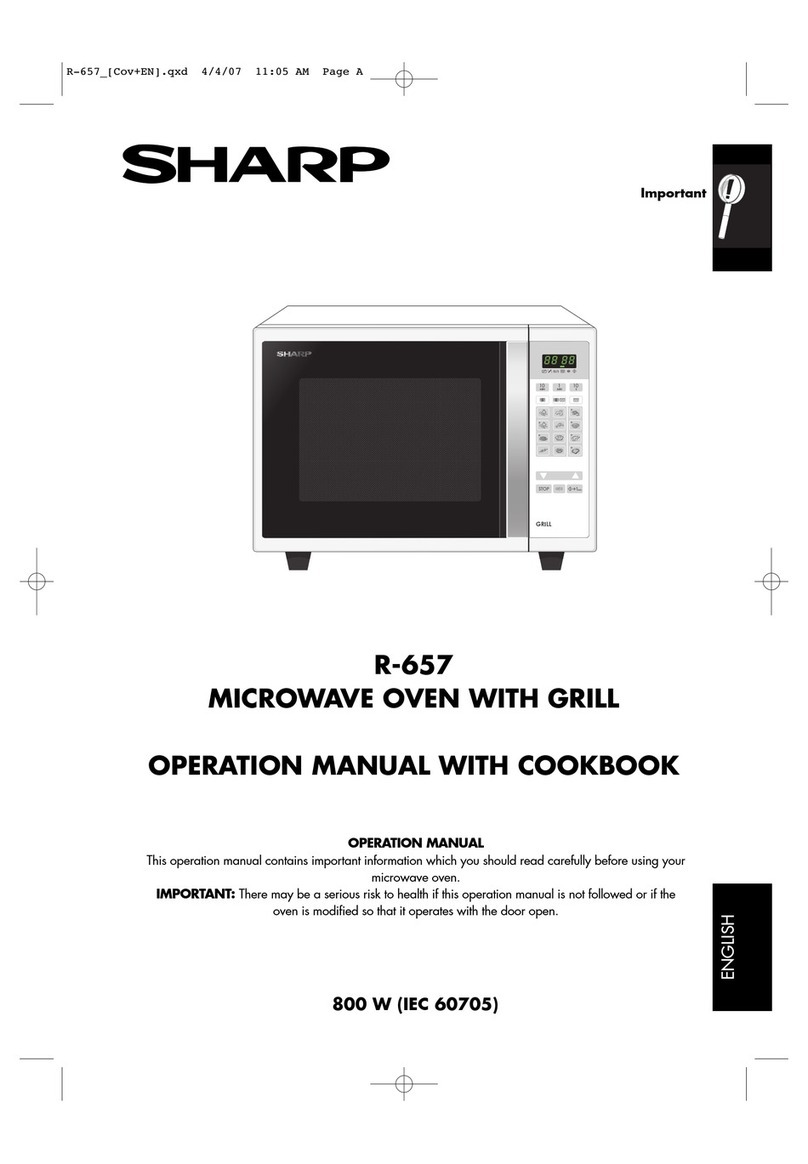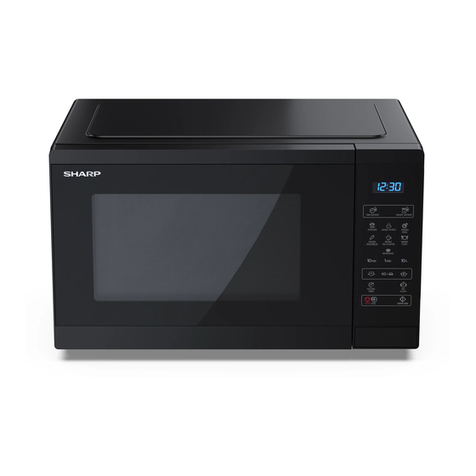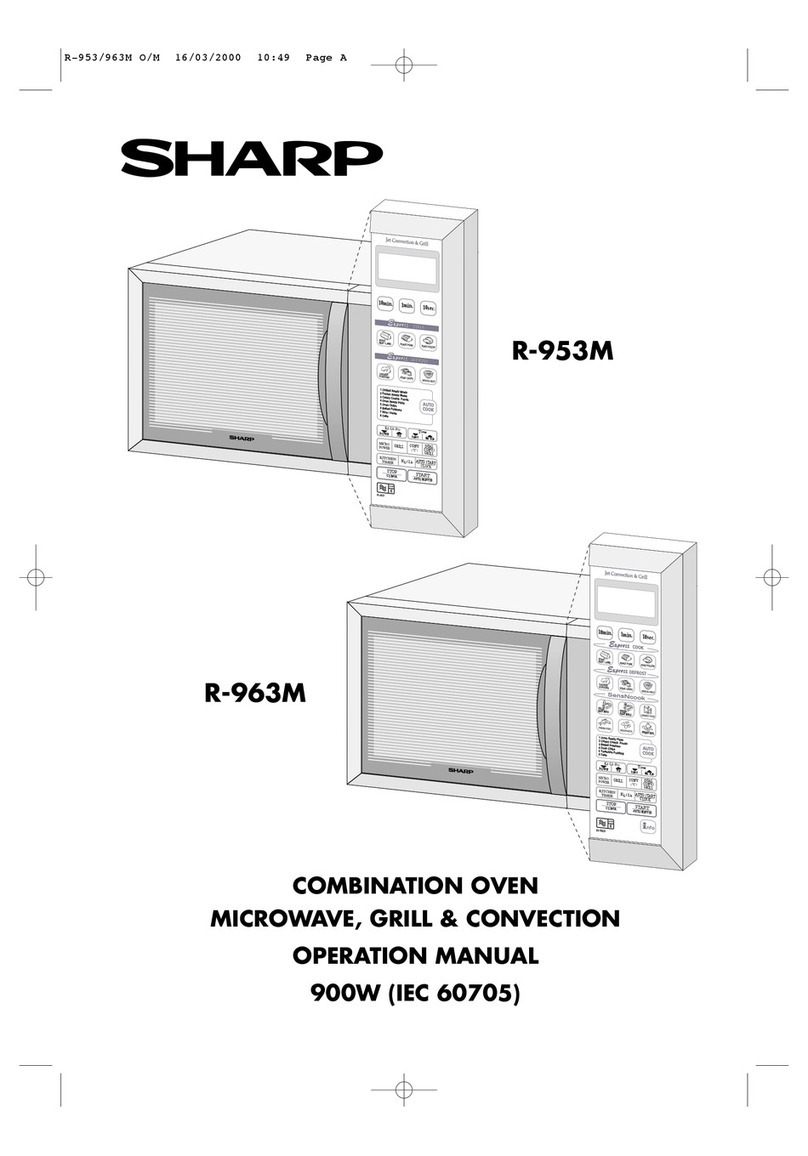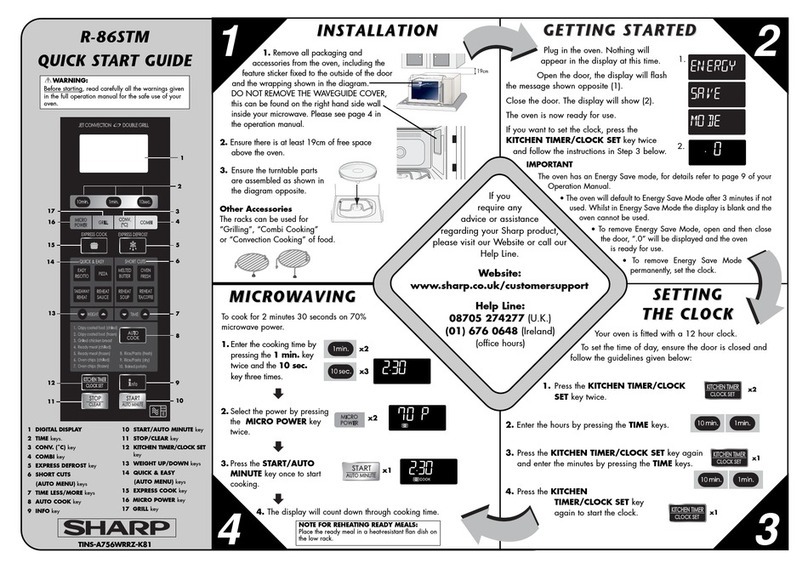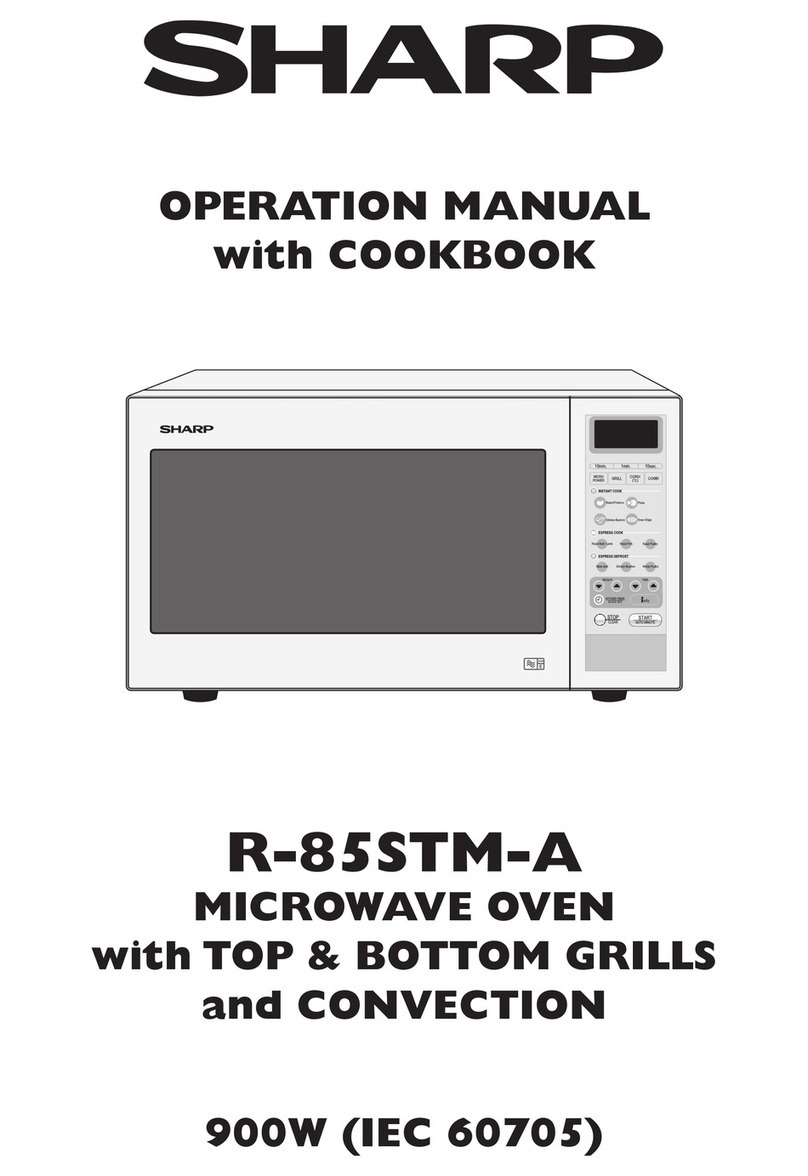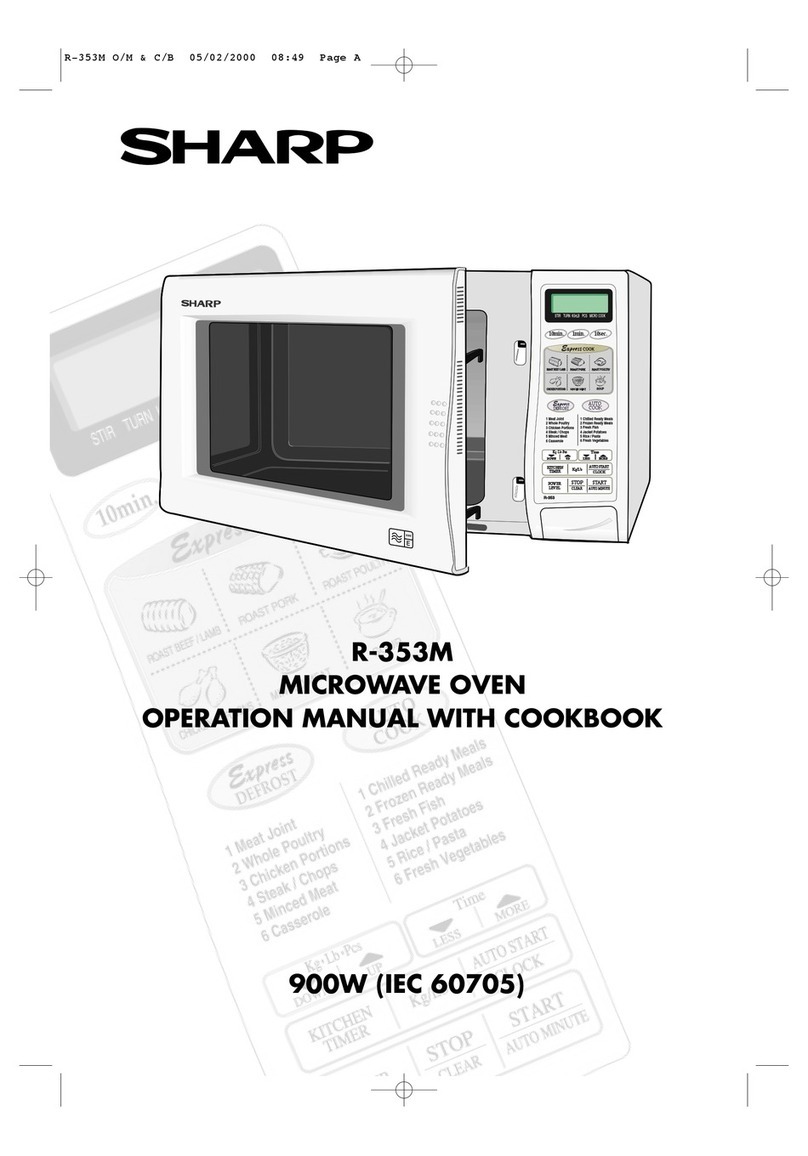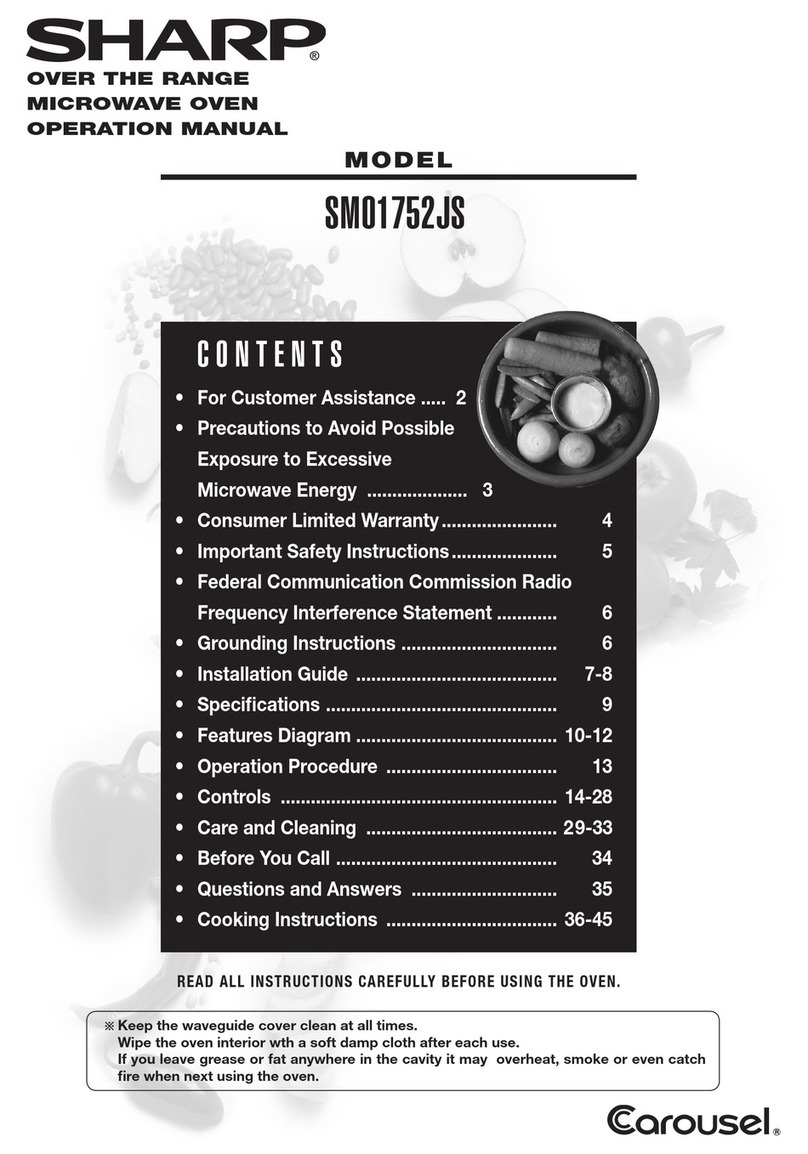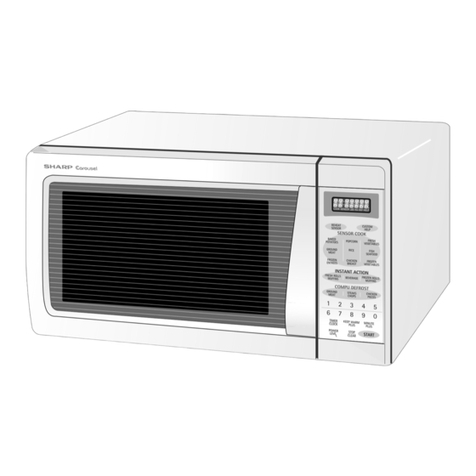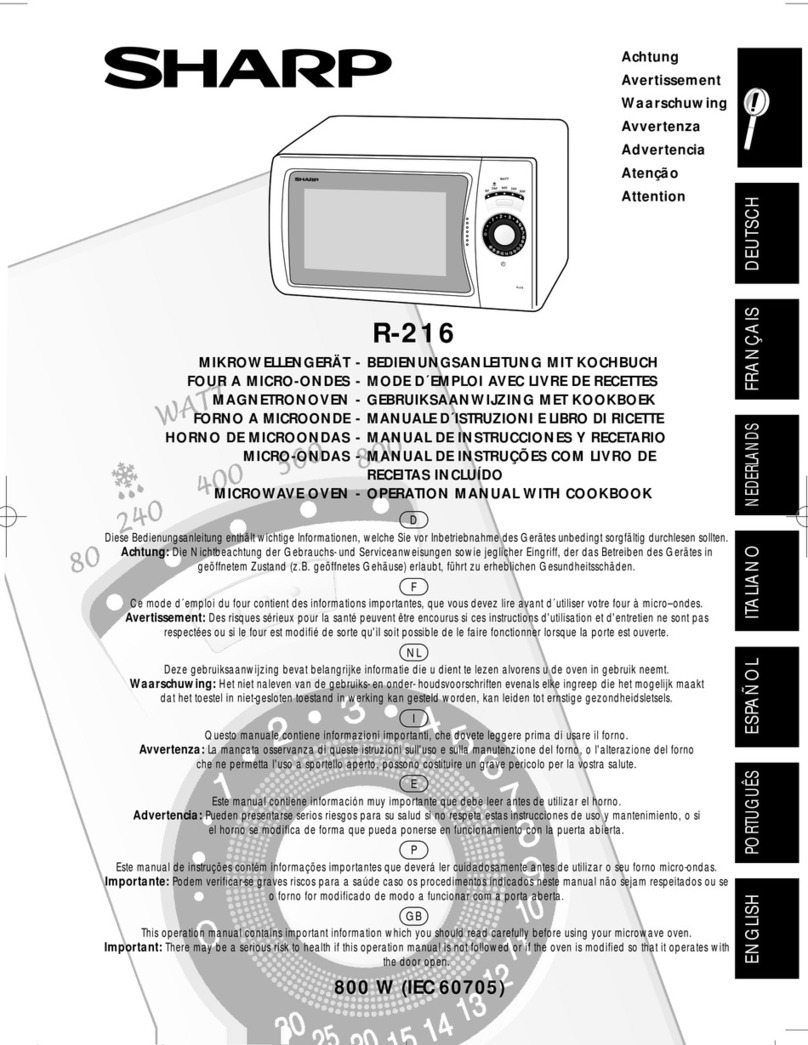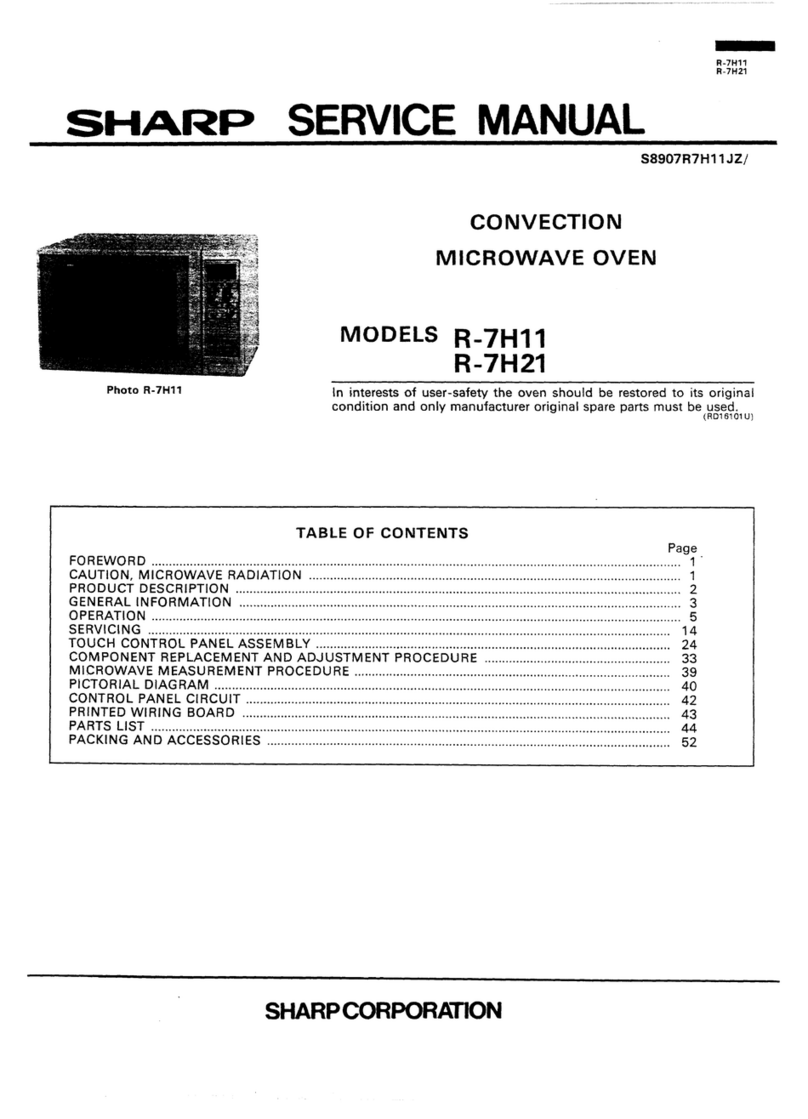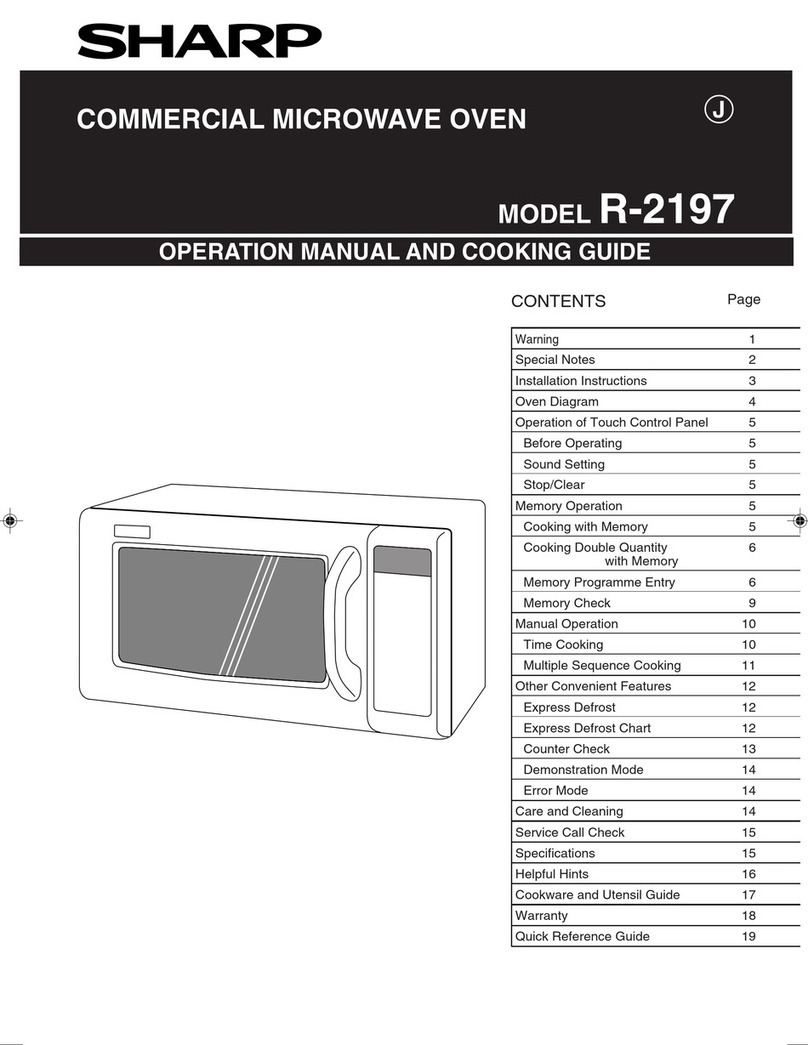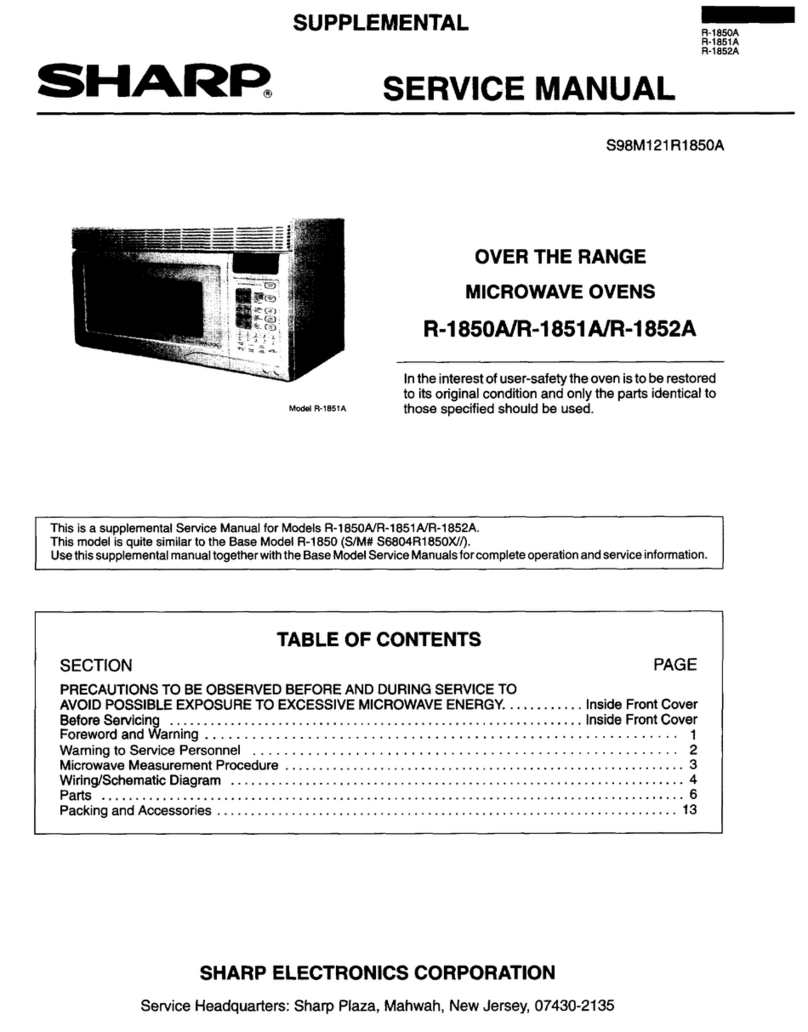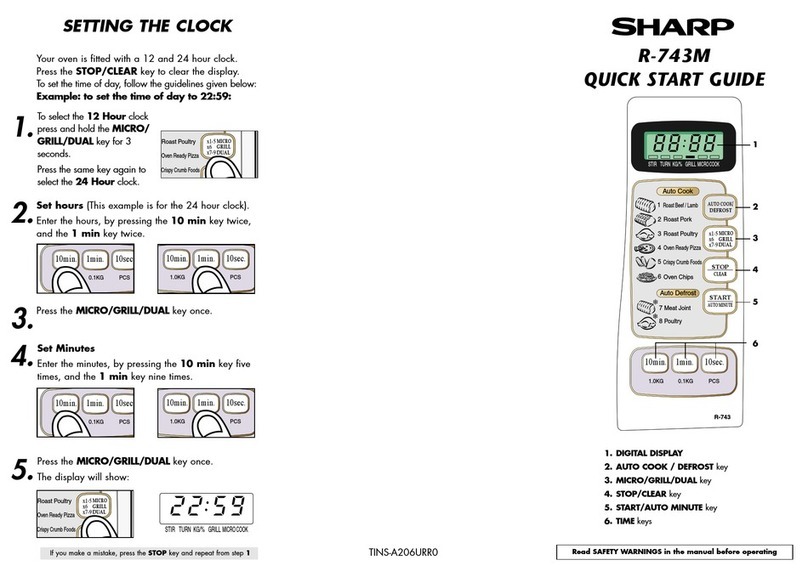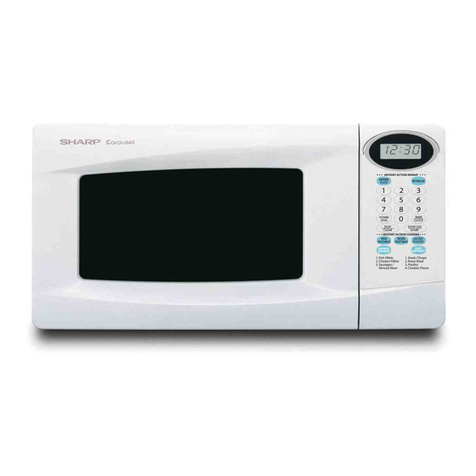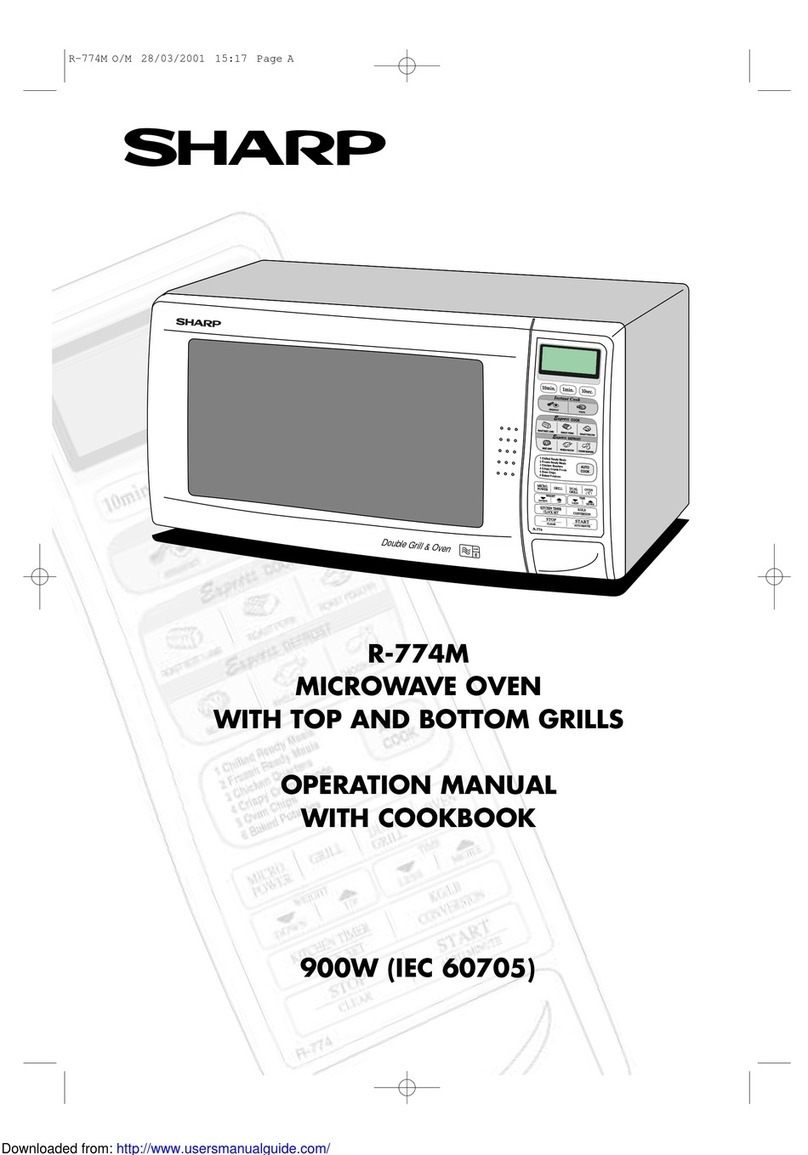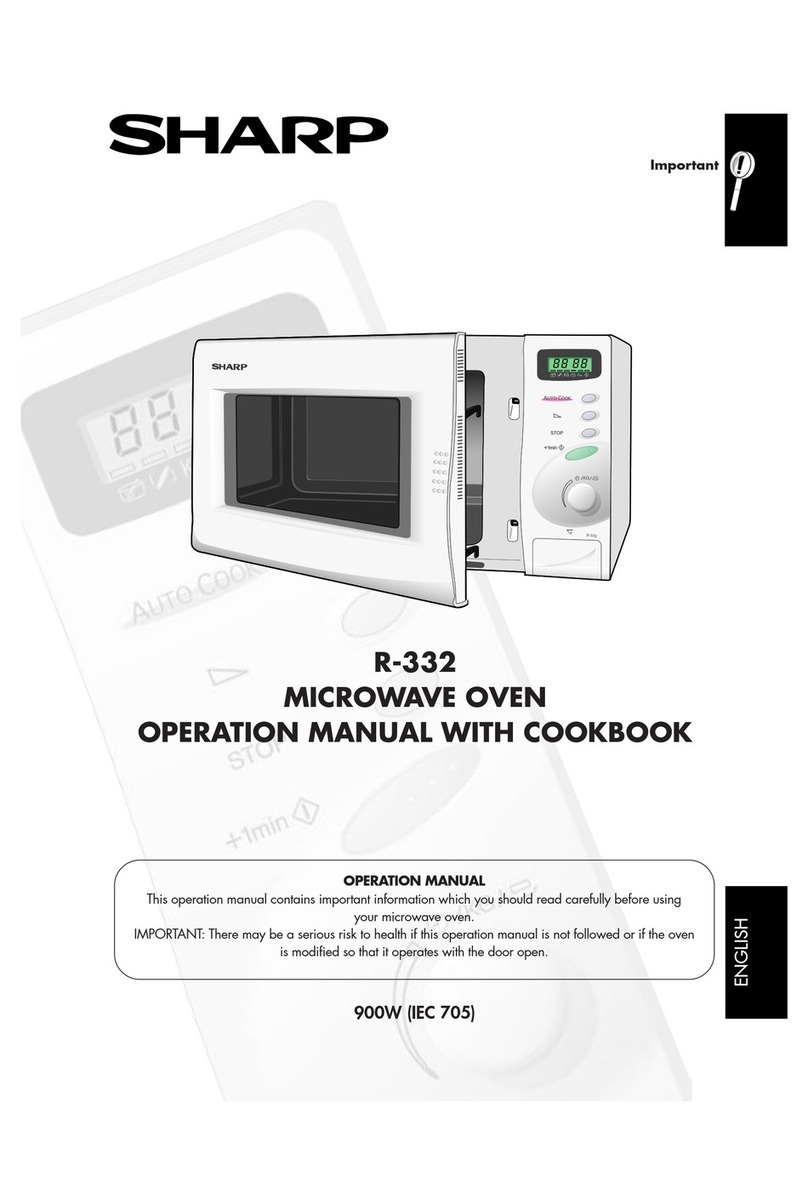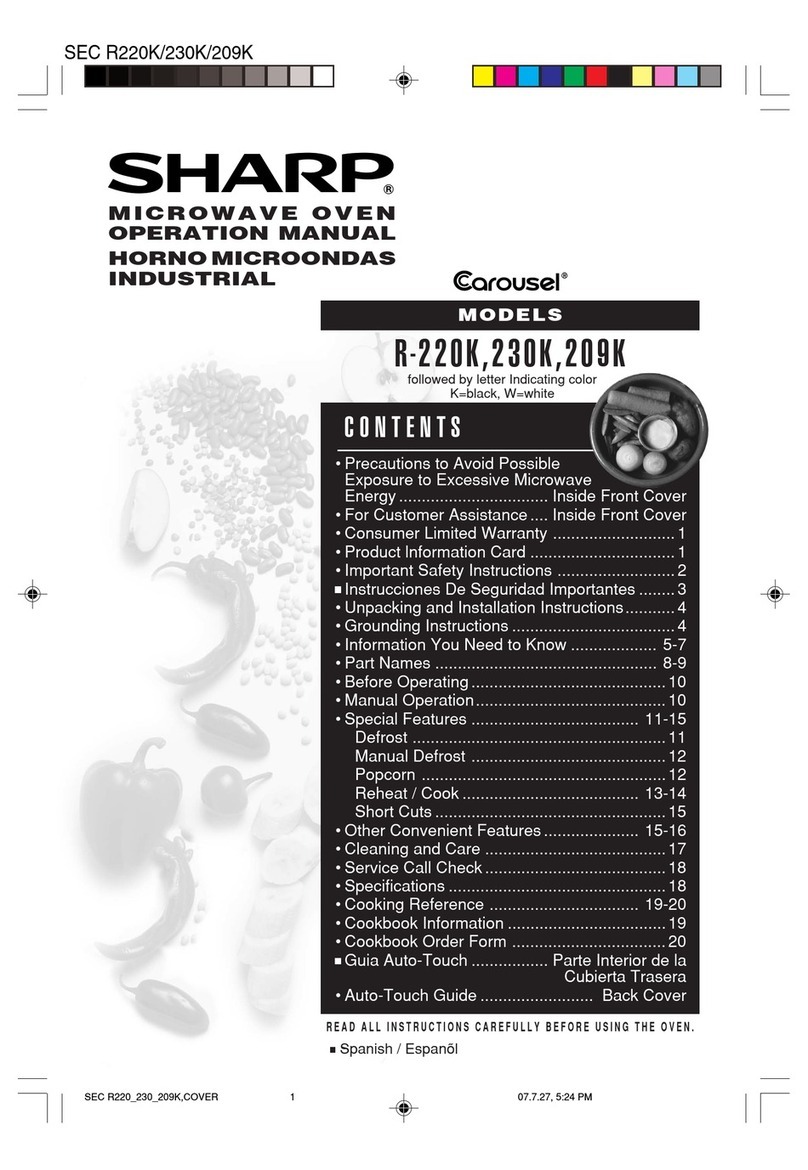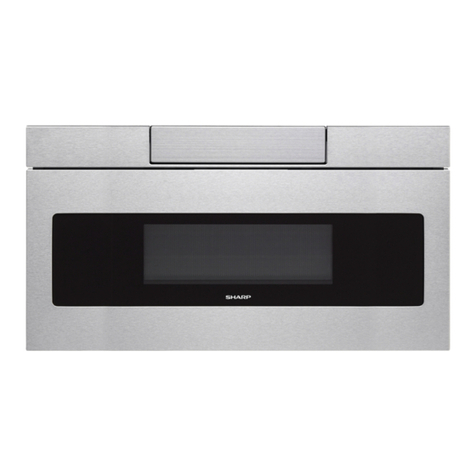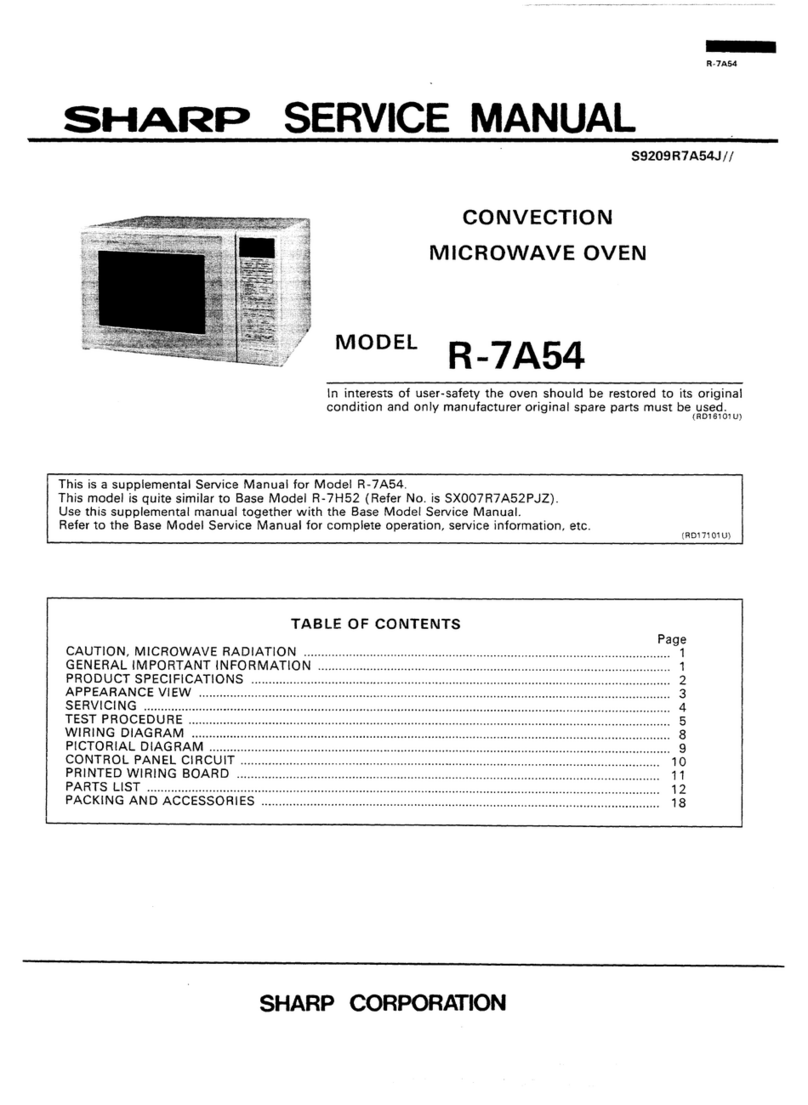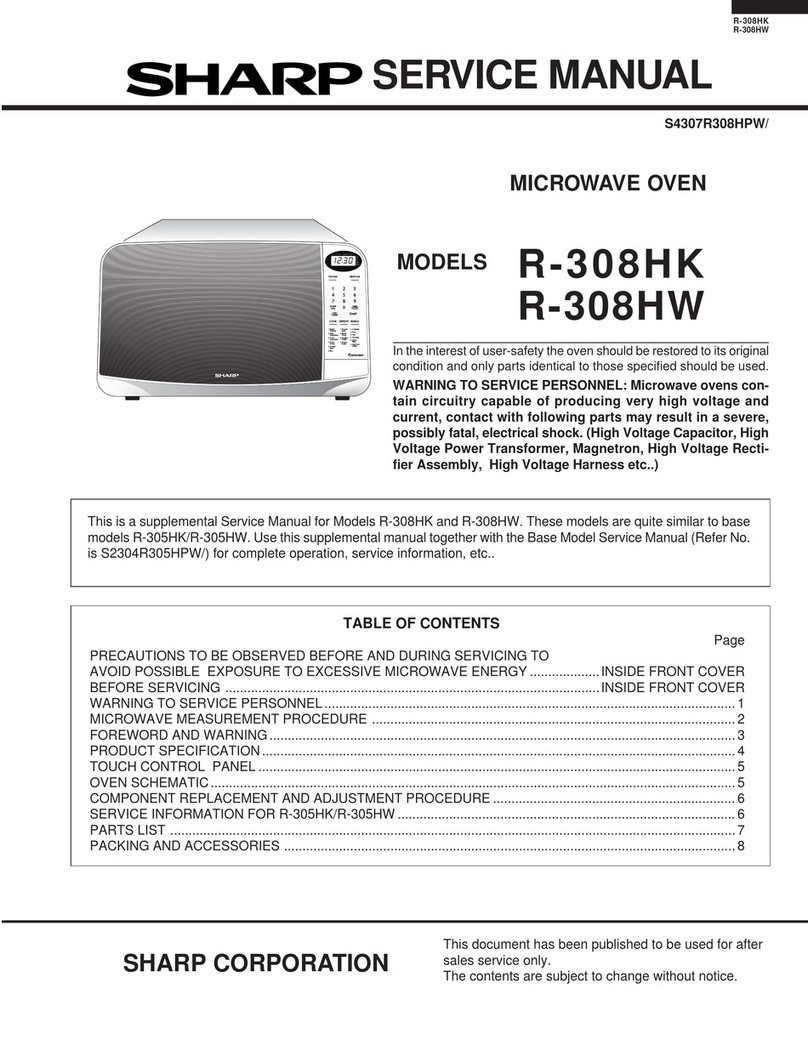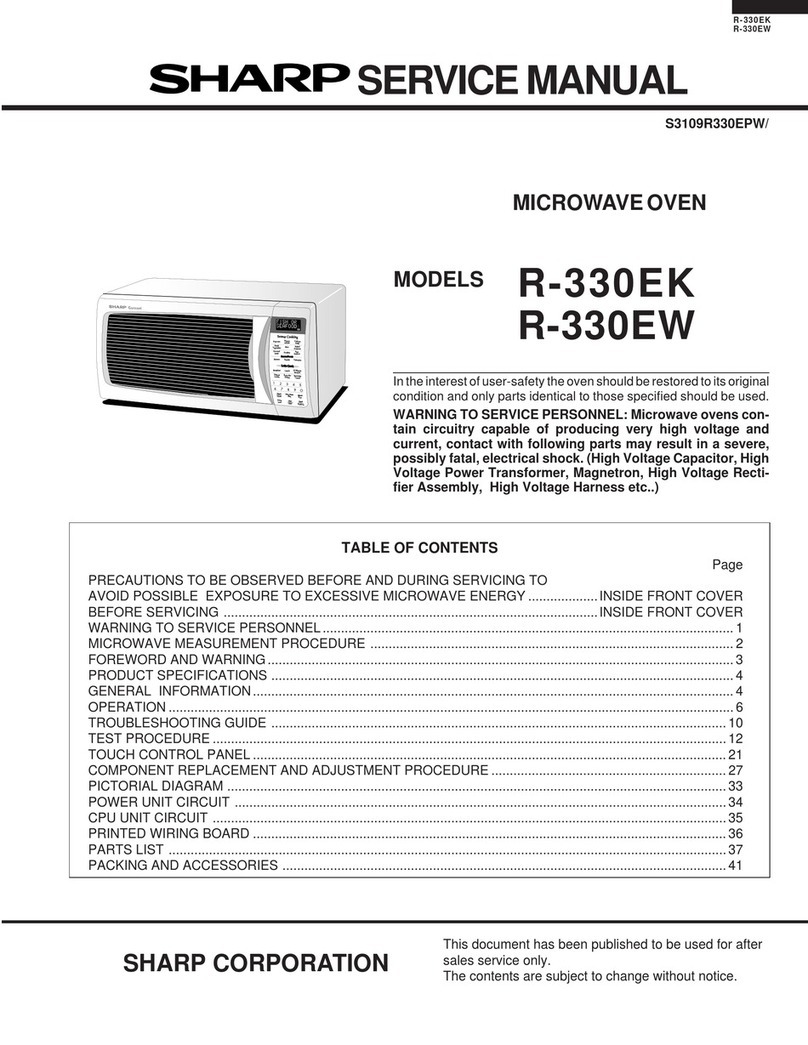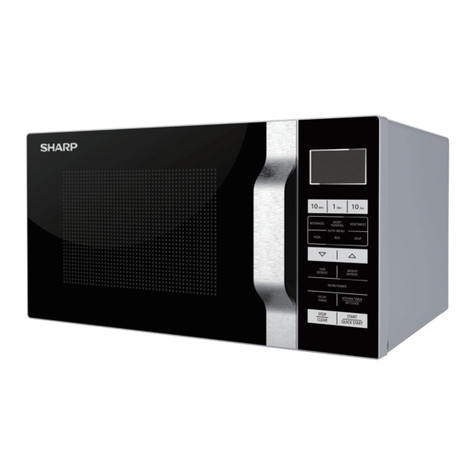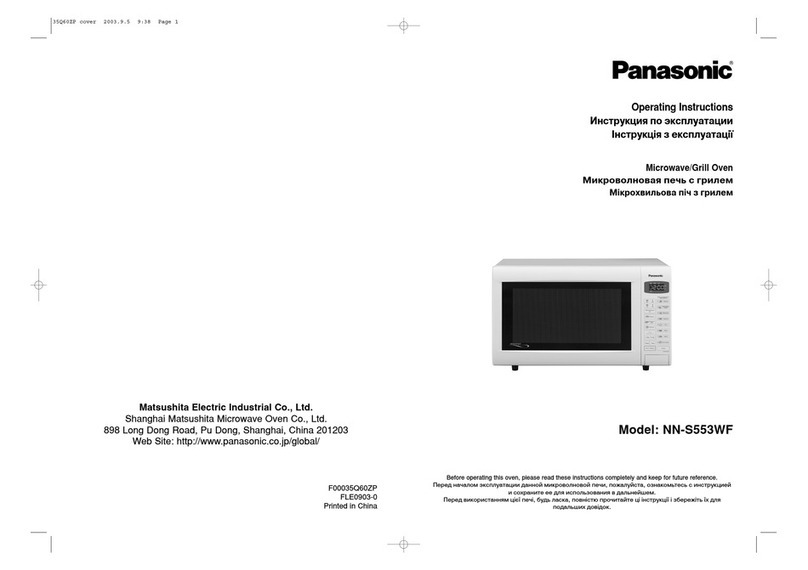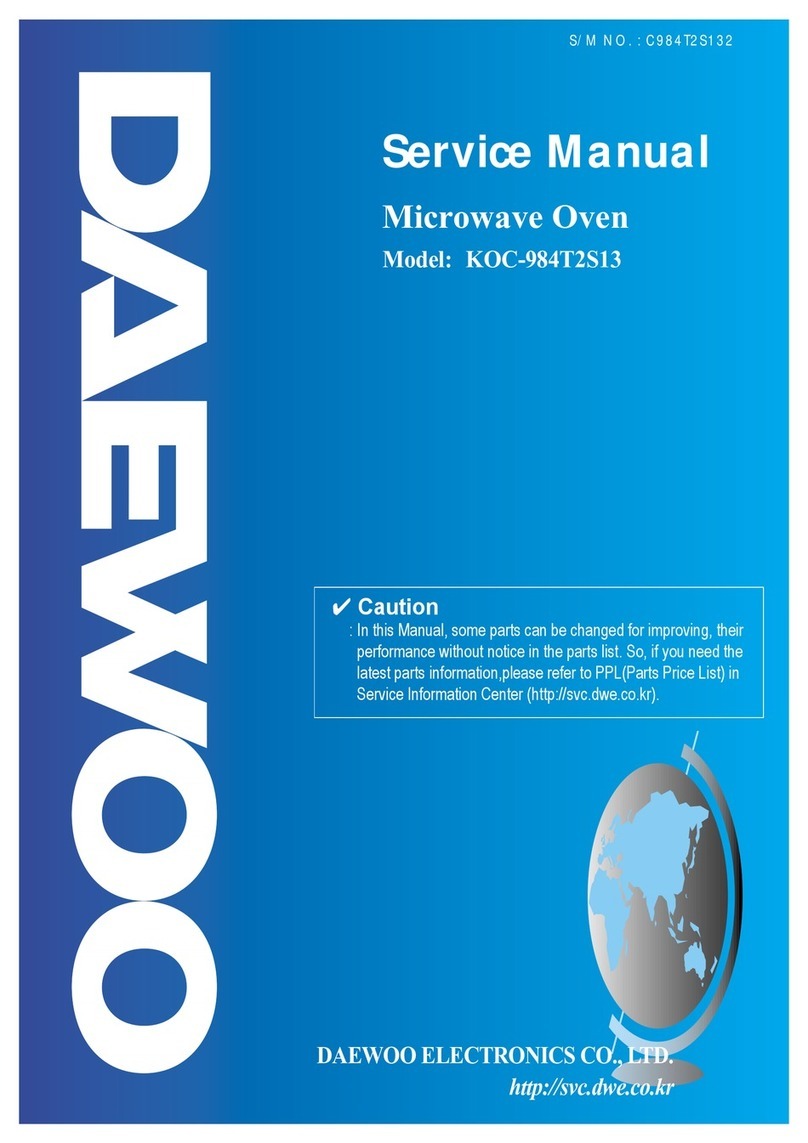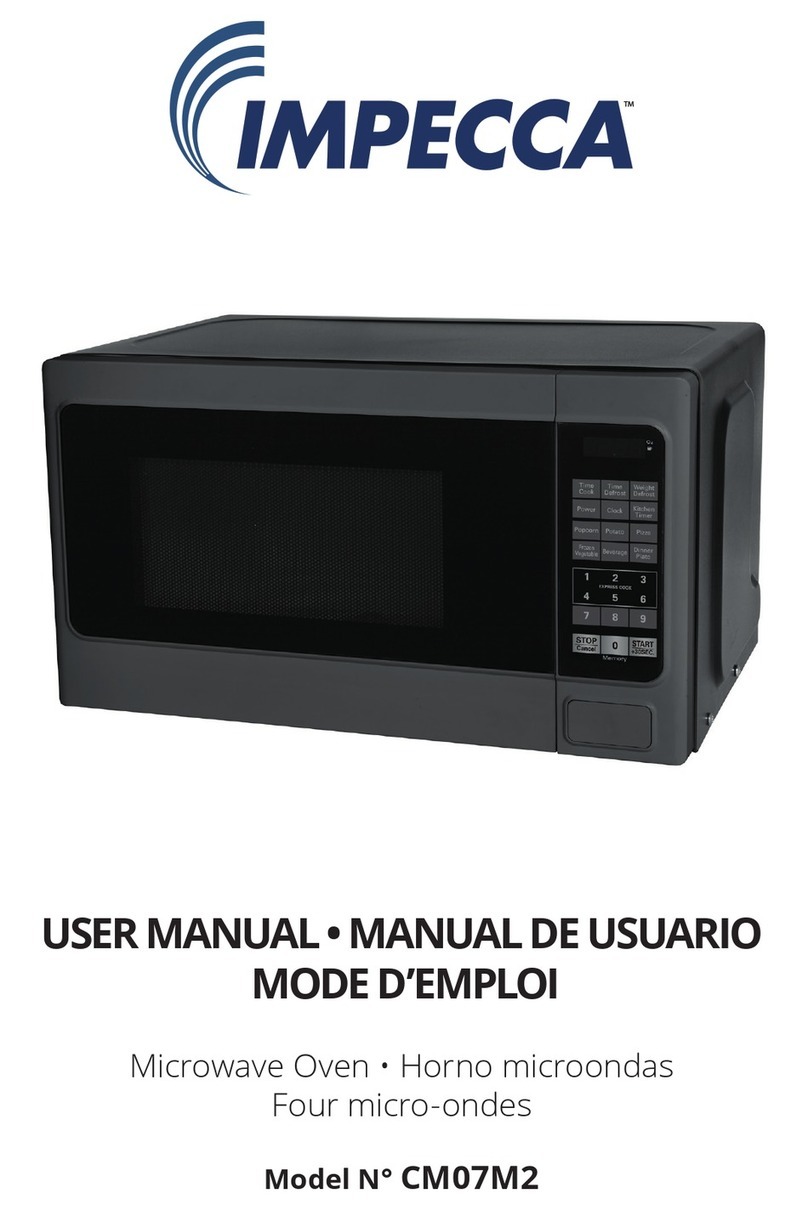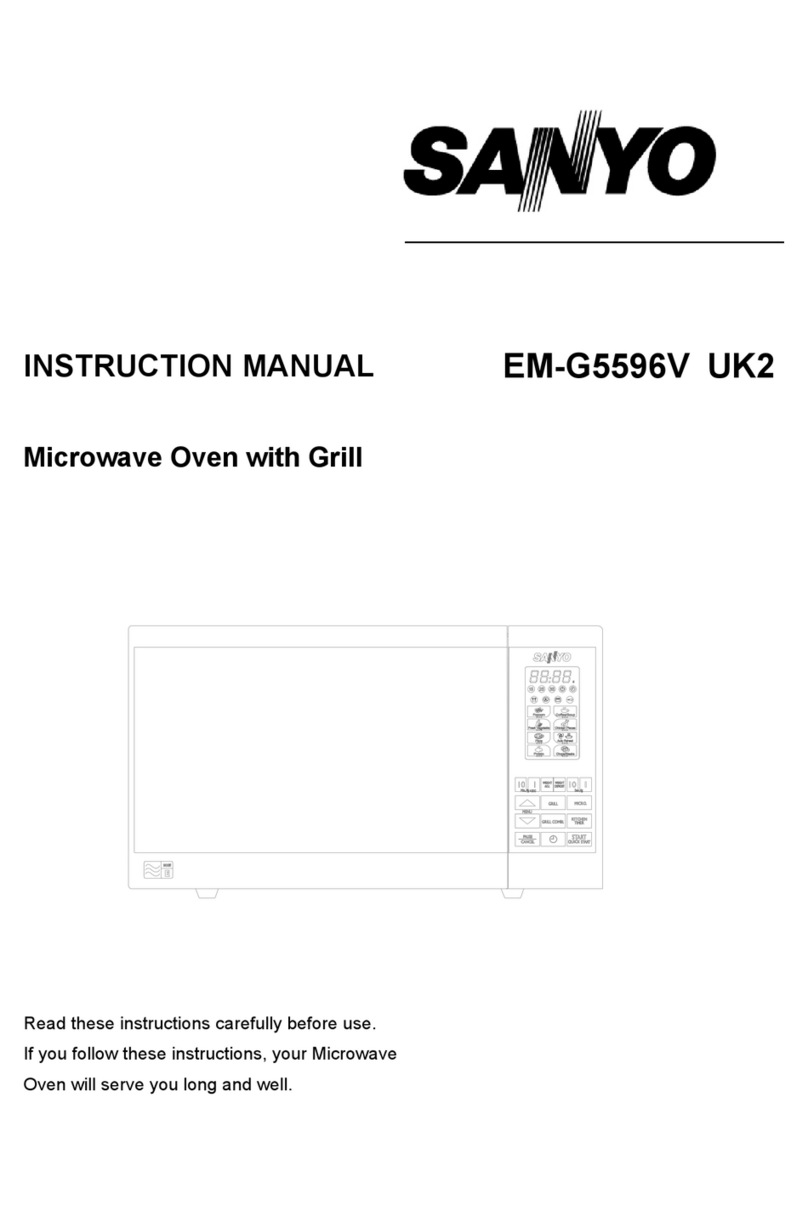
R-84STM - 6
OFF CONDITION
Closing the oven door activates all door interlock switches
(monitored latch switch and stop switch).
IMPORTANT:
When the oven door is closed, the contacts COM-NC of the
monitor switch SW2 must be open and the contacts (COM-
NO) must be closed. When the microwave oven is plugged
into a wall outlet (230-240V / 50Hz), 230-240 volts A.C. is
supplied to the point A1 + A3 in the control unit.
1. The display starts demo mode.
2. To set any programmes or set the clock, you must first
touch the STOP key.
3. Information appears on display.
NOTE: When the oven door is opened, the oven lamp
comes on at this time.
MICROWAVE COOKING CONDITION
HIGH COOKING
Enter a desired cooking time with the Time keys and start the
oven with touching START key.
Function sequence Figure O-1 on page 18
CONNECTED COMPONENTS RELAY
Oven lamp, Turntable motor RY1
High voltage transformer RY2
Fan motor RY6
1 When the cooking time is up, a signal tone is heard and
the relays RY1 + RY2 + RY6 go back to their home
position. The circuits to the oven lamp, high voltage
transformer, fan motor and turntable motor are cut off.
2. When the oven door is opened during a cooking cycle,
the switches come to the following condition.
Switch Contact Condition
During Oven Door
Cooking Open(No cooking)
Monitored latch Switch COM-NO Closed Opened
Monitor Switch COM-NO Closed Opened
Monitor Switch COM-NC Opened Closed
Stop switch
COM-NO Closed Opened
The circuit to the high voltage transformer, is cut off when the
contact of relay RY2 contacts COM-NO of the monitored
latch switch SW1, and monitor switch SW2 are made open.
The circuit to the fan motor is cut off when the relay RY6 is
made open. The circuit to the turntable motor is cut off when
the contacts COM-NO of the monitor switch are made open.
The relay RY2 and RY6 are made open when the door is
opened. The oven lamp remains on even if the oven door is
opened after the cooking cycle has been interrupted, because
the relay RY1 stays closed. Shown in the display is remaining
time.
3. MONITOR SWITCH CIRCUIT
The monitor switch SW2 is mechanically controlled by
the oven door, and monitors the operation of the monitored
latch switch SW1.
3-1. When the oven door is opened during or after the cycle
of a cooking program, the monitored latch switch SW1
and stop switch SW3 must open their contacts (COM-
NO) first. After that the contacts (COM-NC) of the
monitor switch SW2 can be closed and the contacts
(COM-NO) of monitor switch SW2 are made open.
3-2. When the oven door is closed. The contacts (COM-NC)
of the monitor switch SW2 must be opened and the
contacts (COM-NO) of monitor switch SW2 must be
closed. After that the contacts of the monitored latch
switch SW1 and the stop switch SW3 are made closed.
3-3. When the oven door is opened and the contacts of the
monitored latch switch SW1 remain closed, the fuse F2
F8A will blow. Because the relay RY1 and monitor
switch SW2 are closed and a short circuit is caused.
3 seconds are needed for heating up the
magnetron filament.
32 sec. ON
24 sec. ON
18 sec. ON
12 sec. ON
6 sec. ON
8 sec. OFF
14 sec. OFF
20 sec. OFF
28 sec. OFF
HIGH
MEDIUM
HIGH
MEDIUM
MEDIUM
LOW
LOW
Approx. 70%
Approx. 50%
Approx. 30%
Approx. 10%
Approx. 100%
MEDIUM HIGH, MEDIUM, MEDIUM LOW, LOW
COOKING
When the microwave oven is preset for variable cooking
power, the 230-240 volts A.C. power is supplied to the high
voltage transformer intermittently within a 32-second time
base through the relay contact which is coupled with the
current-limiting relay RY2. The following levels of microwave
power are given.
Note: The On/Off time ratio does not exactly correspond to
the percentage of microwave power, because approx.
Approx 100%
OPERATION SEQUENCE

